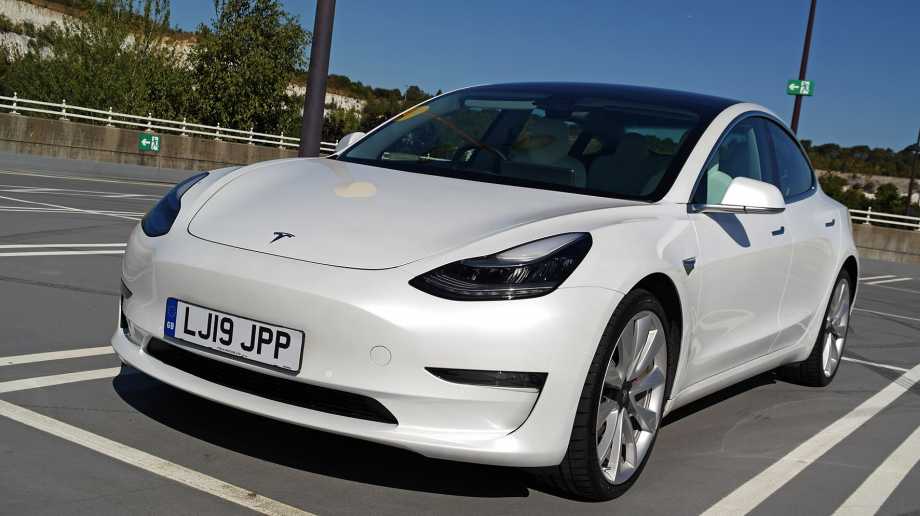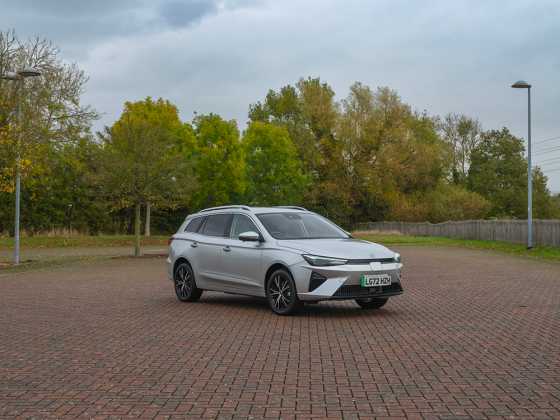First drive: Tesla Model 3 Performance

In the offing since 2003, the Model 3 is the smallest and most affordable Tesla yet. With similar range and performance hallmarks as its more expensive siblings, does it have what it takes to revolutionise the electric car market, and has the wait been worthwhile? Richard Gooding finds out
What is it?
After the success of its Model S and X, the Model 3 is the car which was always if not Tesla’s endgame, the machine that would cement it in the affordable electric car marketplace. Three years since buyers could first place a reservation, the Model 3 has arrived. The most affordable Tesla yet, its smaller footprint doesn’t necessarily mean less equipment, performance or range, rather much the same qualities as the Californian company’s much-lauded larger cars, just at a cheaper price.
How does it drive?
From the outside, the 4.69-metre long Model 3 shares its silhouette with the larger Model S. But, whereas the bigger car is a fastback-styled five-door hatch, the Model 3 is a four-door saloon with a traditional boot. There’s 542 litres of luggage space in the front, rear and underfloor storage compartments, and the more simply-styled interior works better than any Tesla so far. It’s easier to use and looks more stylish, the landscape-orientated 15-inch colour touchscreen controlling all the car’s functions.
A single air vent spanning the width of the dash provides ventilation, and more conventional door pulls signify Tesla’s mass-market aim. Build quality appears better than the larger Teslas, despite the Model 3 costing less, and although lower quality plastics do appear in the centre console, there is so little to distract, the cabin is a calming place to be. A glass roof is standard on every Model 3, helping to create favourable first impressions.
The theatre starts even before you get into Tesla’s new star. Beating any starting button for drama, the car is turned on by tapping the RFID key card on the B-pillar and centre console. The Model 3 debuted a switch from Tesla’s traditional use of AC induction motors to permanent magnet synchronous items and compared to the Standard Range Plus (184kW/243bhp) and Long Range (271kW/358bhp) Model 3s, the Performance car predictably has the most power at 360kW/476bhp.
As you’d expect, the pace is blistering, even for an electric car. With 471lb ft of torque, the Model 3 is a very fast car, regardless of powertrain. The pace can be wound back, though, thanks to one of the two ‘Chill’ and ‘Sport’ acceleration modes. The overall feel of the newcomer is one of agility, the firm suspension still imparting comfort, and the well-weighted steering adjustable by way of ‘Comfort’, ‘Standard’ and ‘Sport’ settings.
The Model 3 offers a keen and direct driving experience, helped by its low centre of gravity and almost ideal 47 per cent front and 53 per cent rear weight distribution. Dual motors and all-wheel drive on the Long Range and Performance versions aid surefooted-ness, the independent motors digitally controlling the torque to the front and rear wheels. The Standard Range Plus car has just the one motor and rear-wheel drive. Tesla has been building electric cars since 2008, and the two-stage regenerative braking is as good as you’d hope, the retardation strong and consistent.
What range does it have?
The entry-level 54kWh Model 3 Standard Range Plus can travel 254 miles (WLTP) on a single charge, with Long Range 75kWh cars adding 94 miles to that. Perhaps as expected, the Model 3 Performance offers less distance from the same 75kWh lithium-ion battery as the Long Range, but not that much less. At 329 miles, it’s only 19 miles fewer than the Long Range car, given its much improved performance figures. But, if the supercar-baiting 0-62mph time of 3.2 seconds – the Long Range car takes 4.4 seconds – is utilised often, we’d expect that range to fall quite significantly. On paper, though, there doesn’t seem too much range penalty choosing the performance-advantaged car.
How long does it take to charge?
A 7.4kW home charger will refill a Long Range Model 3 in around eight hours. The Model 3 is compatible with Tesla’s well-established Supercharger network, but unlike Model S and X, Model 3 customers’ access is limited to a pay-per-use basis. It’s still the fastest way to top up the Model 3’s battery, though, with a 30-minute charge replenishing 170 miles of range. There are 430 Supercharger stations and 3,600 chargers throughout Europe (1,600 stations and 14,000 chargers worldwide), so finding one shouldn’t be difficult. Add in ‘destination charging’ points and the availability of third party networks thanks to the Model 3’s CCS socket, and the Model 3 probably lives up to Tesla’s claim of having the most charging flexibility of any EV on the market.
What does it cost?
Similarly to other Tesla cars, the Model 3 is available in Standard Range Plus, Long Range and Performance versions. Living up to Tesla’s most affordable car tag, the entry-level Model 3 Standard Range Plus starts from £38,500 including the government’s £3,500 Plug-in Car Grant (PiCG). Predictably, as you move up the range, prices escalate. The Long Range version begins at £47,000, with the range-topping Performance car tested here priced from £52,000.
Options are kept to a minimum, and there are little equipment differences between the trio of cars. Standard Range Plus and Long Range Model 3s wear 18-inch ‘Aero’ alloy wheels, the Performance version has 20-inch rims. The Performance car also has a small rear lip spoiler to mark it out from its siblings. An all-black premium ‘vegan’ leather interior is standard on every Model 3, the white and black ‘Premium’ interior of our test car £1,000 extra, although additional audio and navigation options are thrown in, too. Pearl White Multicoat paint is included in the price of all cars, with a range of four additional colours costing between £800 and £2,000.
Tesla’s automatic driving ‘Autopilot’ software is part of the standard specification of all Model 3s and can be upgraded to a full driving package. Standard Range Plus cars also have fewer connectivity options with maps and navigation software, but no real-time traffic information. Android Auto or Apple CarPlay connectivity is not available on any version.
How much does it cost to tax?
Tesla only makes all-electric vehicles, so the Model 3 emits 0g/km of CO2 emissions. As a result, VED is rated at £0 for the Standard Range Plus car. However, as
the Long Range and Performance versions have list prices that exceed £40,000, they attract the £320 ‘Premium Rate’ from years two to six. BIK for all Model 3s is rated at
16 per cent for the 2019/2020 tax year, dropping to 0 per cent for 2020/2021 under new government regulations.
Why does my fleet need one?
Less expensive than both the Model S and Model X, the Model 3 offers range and performance hitherto limited to both of Tesla’s larger and more established cars. And while ‘affordable’ may be considered a moot point when it comes to the Performance variant, which we readily admit will not the optimum choice for green-minded drivers, there’s no denying the smaller Model 3 encapsulates Tesla’s much-admired range and effervescent pace qualities, and is every inch a product from the Palo Alto-based company. With its minimalist design, extremely usable range on paper and more compact size, it will appeal to drivers who don’t need a car as large as the Model S or X.
Seemingly better built than its long-established relatives, too, the Model 3’s simpler-styled cabin is better for ease of use, as well as appearance. The more agile feel of the chassis means the driving experience also lives up to expectations. All things considered, the wait was worth it. A welcome new market proposition, the Model 3 earns its praise with its broad range of abilities.









